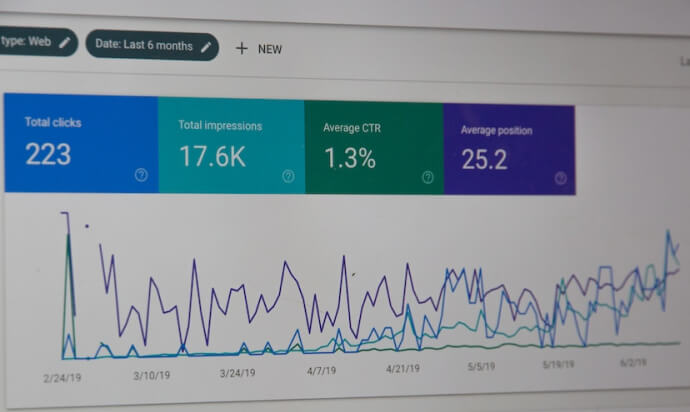The InsurTech world was stunned earlier this month (September 2019) when FT Partners released news that Prudential Financial acquired three-year-old Assurance for a total consideration of $3.5 billion. Yes, that’s with a “B”. The terms of the acquisition included upfront compensation of $2.35 billion and an additional earnout of $1.15 billion in cash and equity, depending on whether Assurance meets some growth objectives.
However, as someone who has been in the #digitalmarketing space for over 20 years, it is very clear how Assurance generated exponential growth in the “boring” insurance vertical. So you may be asking yourself, “How did Assurance generate so many customers in such a short period of time?” The simple answer: Affiliate Marketing and/or its marketing tactics. Yes, affiliate marketing. Although it often gets a bad rap, affiliate marketers and/or their tactics helped create this $3.5 Billion acquisition.
First off, the team at Assurance deserves a lot of credit. They tapped into a marketing channel and employed tactics which helped generate a massive amount of customers fairly quickly. They then worked on vertically integrating so as to service these customers directly. They generated leads both directly and through affiliates building a successful distribution channel that dinosaurs like Prudential Financial had no idea how to create. Then they put a bow on top of this pretty little package by introducing Artificial Intelligence. Additionally, they have an amazing team. Just look at their bios.
Now, if you’re a traditional company and you’re looking just at the numbers while foaming from the mouth from buzz words like “AI”, Assurance created FOMO. Yes, Prudential Financial acquired Assurance because of their “Fear of Missing Out” . Trust me, I’m not trying to diminish everything that this team accomplished. I think it’s amazing and their acquisition can serve as a template for many other industries. Personally, knowing the distribution like I do, I just don’t think the $3.5 Billion acquisition is justified.
So let’s look at the primary marketing tactic that drove Assurance’s growth. The tactic is called “Native Advertising” using “Advertorials”. Back in the day, before native advertising companies like Taboola and Outbrain came on the seen, you had Quigo Technologies/AdSonar, Pulse 360, and AdBlade. Also, we didn’t call these type of advertisements “advertorials” at the time. We called them “Farticles”… this was short for “Fake News Articles”. These types of advertisements (to this day) appear next to legitimate news articles and are to the trained eye, nothing more than “click bait”. Nevertheless, “click bait” can create extreme value for both advertisers and affiliates.
Here is an example of one of Assurance’s affiliate’s advertisements as seen on Readers Digest.
Good advertisement, right? It’s targeted to Seniors (yes, who apparently still read Reader’s Digest) and they have created a sense of urgency by saying respond by “September 30”. After you click, you are taken to the Advertorial or as I prefer, “Farticle”.
Now, let’s take a look at this FARTicle and dissect it a little bit. Remember, in affiliate marketing, conversion is everything and playing in the gray area is the norm. Note: It will be interesting to see if Prudential Financial allows Assurance to continue using “gray area” marketing tactics in a highly regulated vertical.
- “The free online tool… provides you will affordable life insurance quotes in less than a minute.” Really? Are you f’ing kidding me… less than a minute. I can’t even brush my teeth in less than a minute. After going through their site, the registration process takes a couple minutes and they do NOT give you quotes during this initial registration.
- “It’s easy to qualify for $250,000 life insurance policies at an extremely low monthly rate.” OK, A) qualifying for $250,000 life insurance policy is NOT easy. After all, insurance companies are running a business and they ONLY want to insure those that it feels they will make money off of. No insurance company likes to pay out on a claim. B) extremely low monthly rates are subjective. What’s low to one individual is not to another.
So, after the Senior citizen being targeted is deceived, thinking they can get a 60 second quote for $250,000 in life insurance for $29/month (whatever “low monthly rate” is to that senior citizen), they are taken to this page.
Presented as a survey, Assurance will collect the consumer’s information and if all goes well, sell her a life insurance policy. Assurance, I assume, has many different policies that it can sell the consumer and will use some “matching algorithm” to help it determine which product is the best fit for the consumer. Maybe the product they sell really is the best policy for the consumer… maybe it’s not the best policy for the consumer, but it generates the highest commission for Assurance. I don’t know, and I really don’t care as I’m only concerned with describing the marketing tactic and marketing channel that was used to help create this potential $3.5 Billion exit.
As an online veteran, it blows my mind that a big behemoth like Prudential Financial couldn’t figure out how to buy advertisements on Taboola or Outbrain and scale its own internal business. Whatever the case, congratulations to the Assurance team for its success.
Do you think that Assurance pulled the wool over Prudential Financial’s eyes or do you think they knew exactly what they were buying? Regardless, Charles Lowrey is on the hook to prove to shareholders that this acquisition will be accretive to Prudential Financial’s business.
P.S. If you run a successful business in the InsurTech space, you service your own customers, and you don’t know how to scale using native marketing, give us a call and we’ll get you on the right track.


